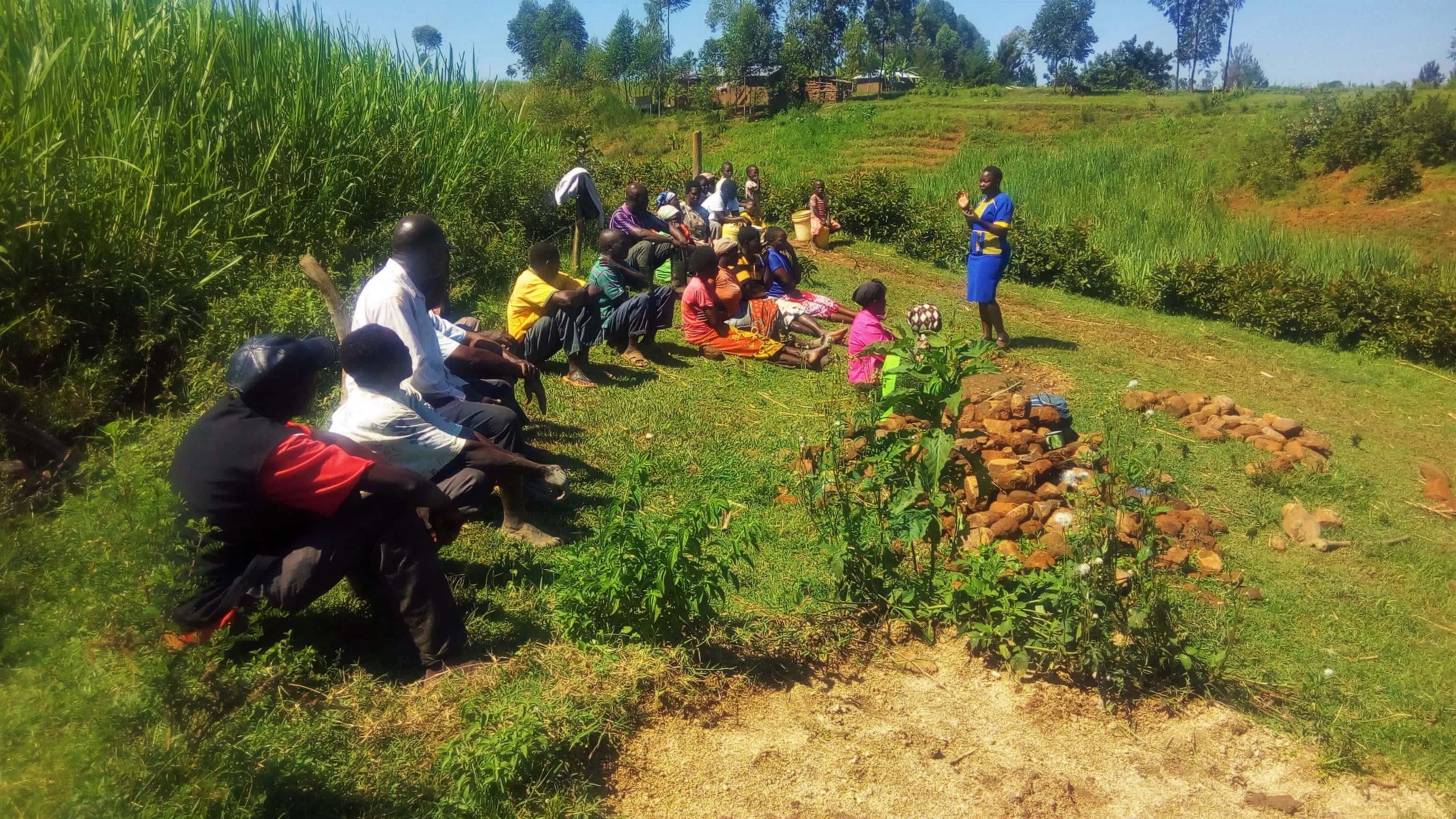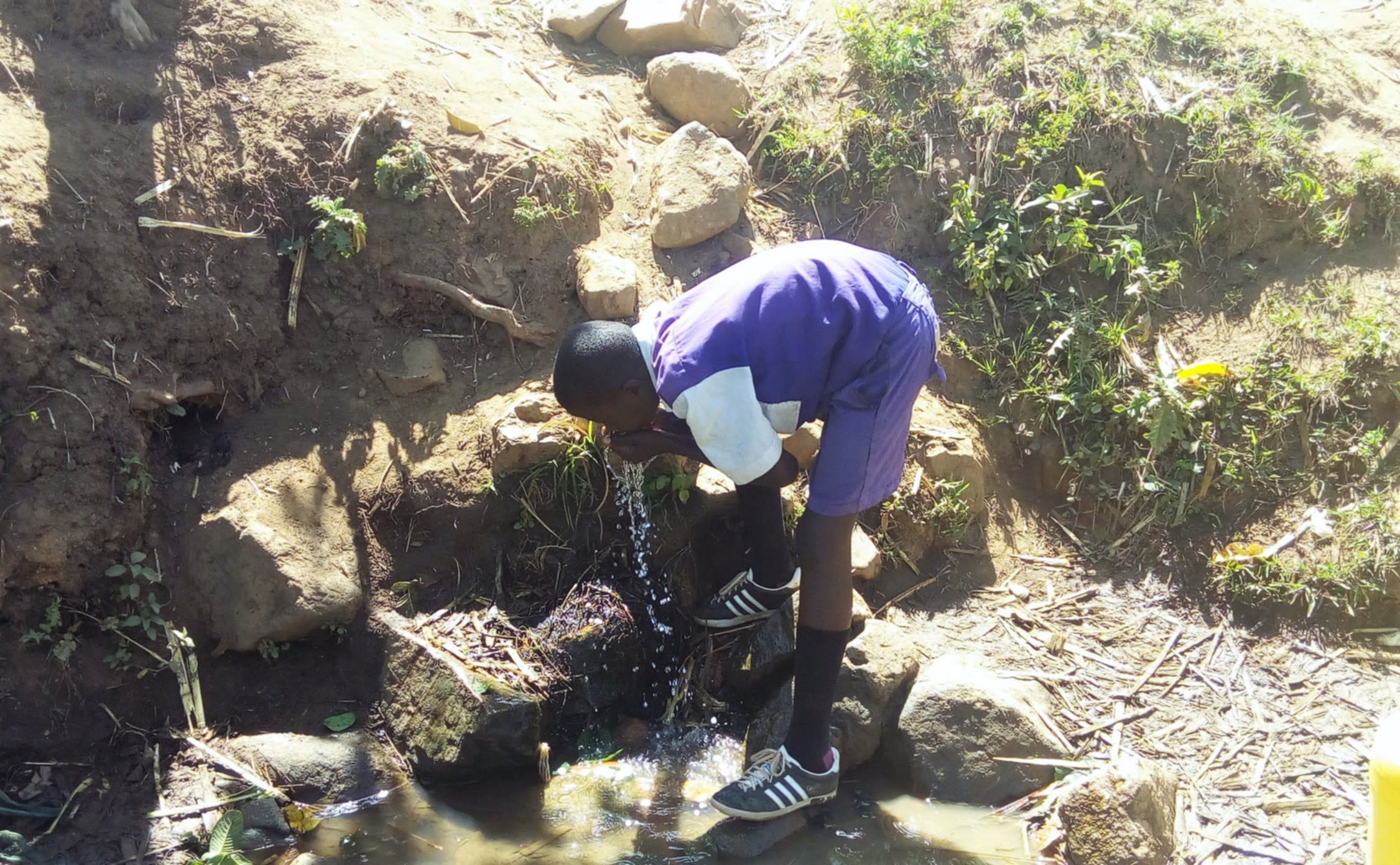This project is a part of our shared program with Western Water and Sanitation Forum (WEWASAFO). Our team is pleased to directly share the below report (edited for clarity, as needed).
Welcome to the Community
As early as 5 AM, the men in this village arise and milk the cows so that they can sell the milk at the market. The women do the house chores, make breakfast and lunch and then go to the fields to grow maize, beans and sweet potatoes. Ematiha's community members enjoy a special bond of unity and cooperation even in the midst of dry spells and major unemployment.
Water Situation
Ayubu Spring is currently contaminated by farming chemicals and animal and human waste dropped nearby. When it rains, these contaminants are washed into the spring. Still, the villagers as well as 1,300 children from the nearby school walk one to two kilometers each trip to this dirty water source. To get all of their cleaning and cooking done, women must make several trips to the spring. You can imagine the conflict that occurs regularly as this many people wait in line for long periods of time.
Community members have fixed a pipe to the spot from which they saw water flowing so that they can place their jerrycans underneath until full.
Mr. Robert Odembu told us that the "most affected are children who suffer from typhoid and diarrhea because they use water from this unprotected spring without boiling and treating it. Water handling is also another issue." Mr. Odembu is a teacher at Ewamakhumbi Primary School. Many of his students rely on Ayubu Spring for their water.
Sanitation Situation
Less than half of households have their own pit latrines. Anyone who doesn't have their own latrine either shares with their neighbor or uses the privacy of bushes. Most of the latrines we visited are smelly and do not provide privacy - just a tattered cloth hangs in the doorway.
Less than a quarter of households have helpful tools like dish racks and clotheslines to dry their belongings off the ground. There are absolutely no hand-washing stations, proving that these families do not know the importance of hand-washing in preventing illness. Bushes surround homes, which provide breeding ground for pests - especially mosquitos.
Plans: Hygiene and Sanitation Training
Community members will attend hygiene and sanitation training for at least two days. This training will ensure participants are no longer ignorant about healthy practices and their importance. The facilitator plans to use PHAST (Participatory Hygiene and Sanitation Transformation), CLTS (Community-Led Total Sanitation), ABCD (Asset-Based Community Development), group discussions, handouts, and demonstrations at the spring.
Training will also result in the formation of a committee that will oversee operations and maintenance at the spring. They will enforce proper behavior around the spring and delegate tasks that will help preserve the site, such as building a fence and digging proper drainage.
Plans: Sanitation Platforms
On the final day of training, participants will select five families that should benefit from new latrines.
Training will also inform the community and selected families on what they need to contribute to make this project a success. They must mobilize locally available materials, such as bricks, clean sand, hardcore, and ballast. The five families must prepare by sinking a pit for the sanitation platforms to be placed over. All community members must work together to make sure that accommodations and food are always provided for the work teams.
Plans: Spring Protection
Fetching water is predominantly a female role, done by both women and young girls. Protecting the spring and offering training and support will therefore help empower the female members of the community by giving them more time and efforts to engage and invest in income-generating activities.
In addition, protecting the spring will ensure that the water is safe, adequate and secure. Construction will keep surface runoff and other contaminants out of the water.
Protecting this spring will result in increased water quality and water flow. Those living in Ematiha will thus be able to live happier, healthier lives as they efficiently fill their containers with clean water from Ayubu Spring.

 Protected Spring
Protected Spring
 Rehabilitation Project
Rehabilitation Project









































